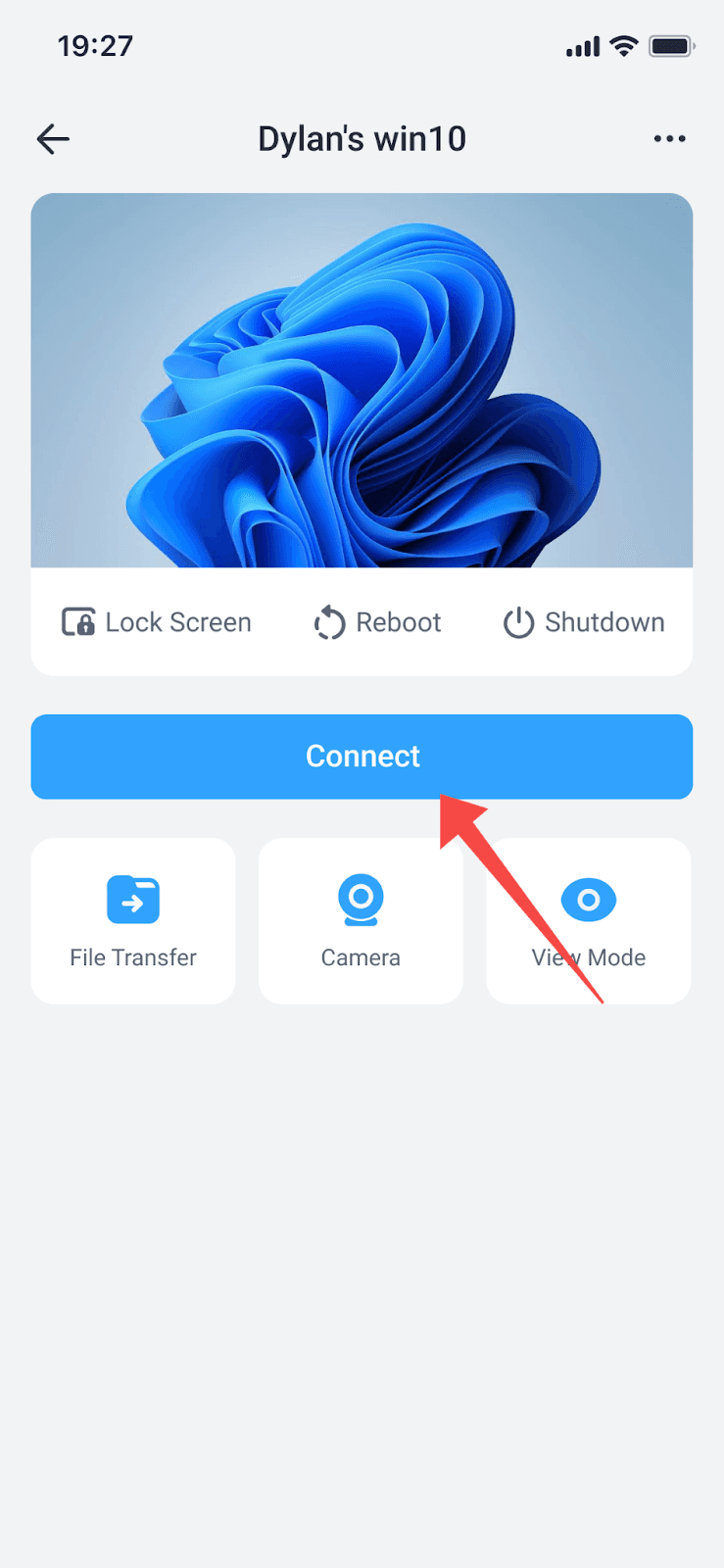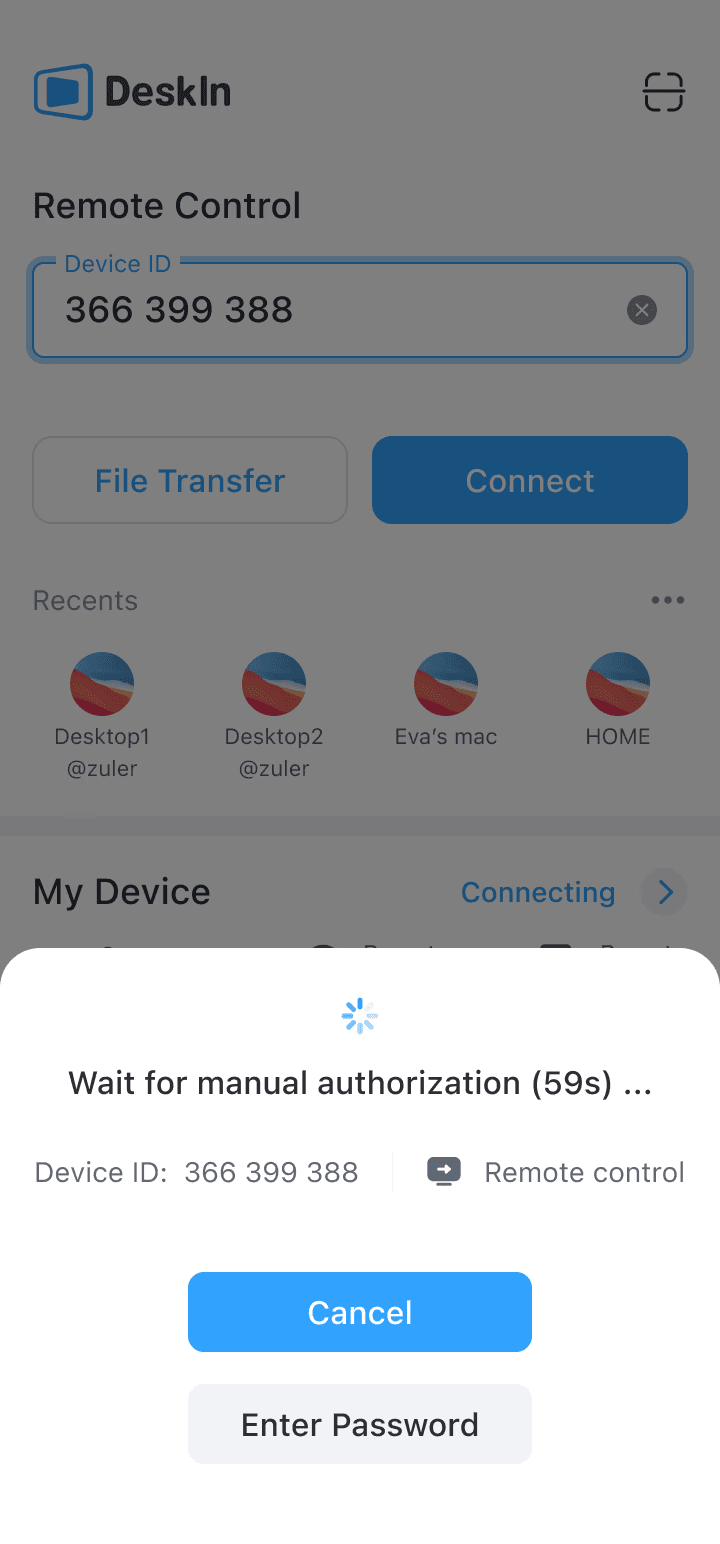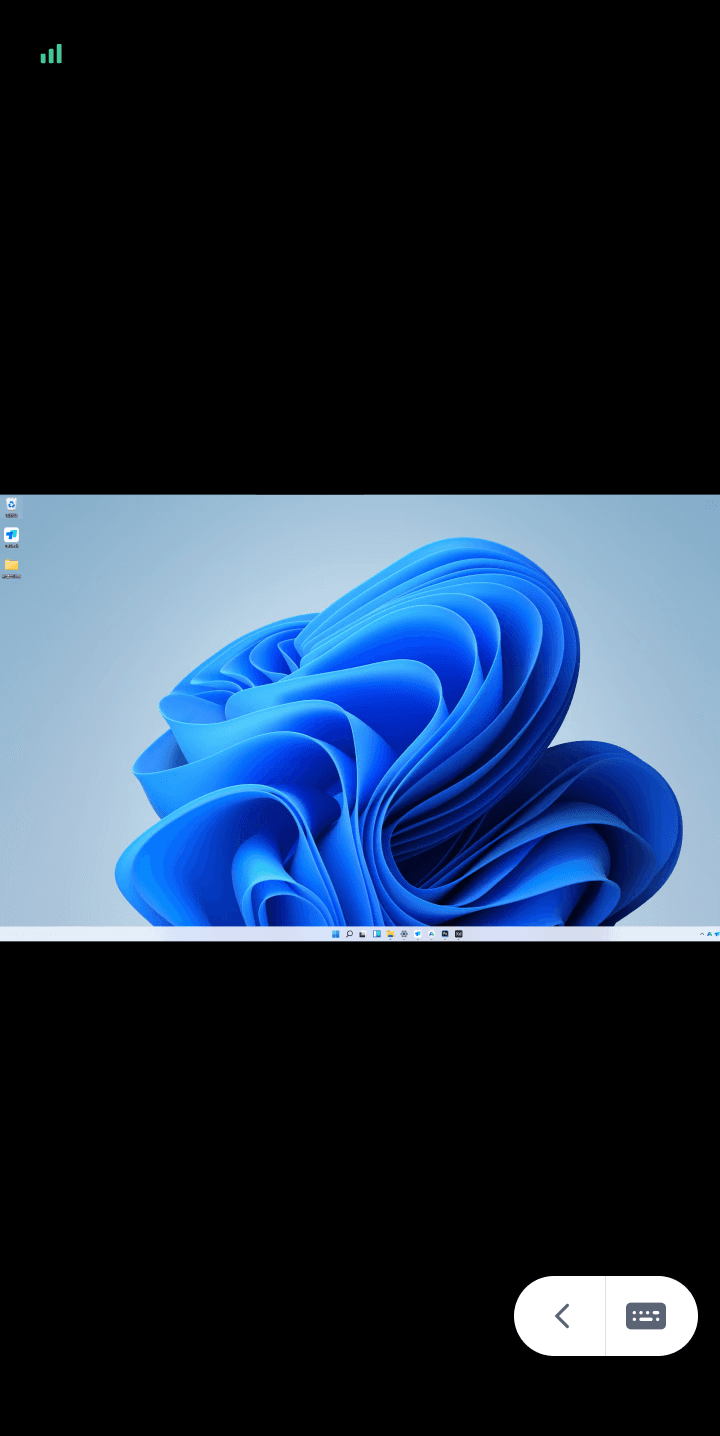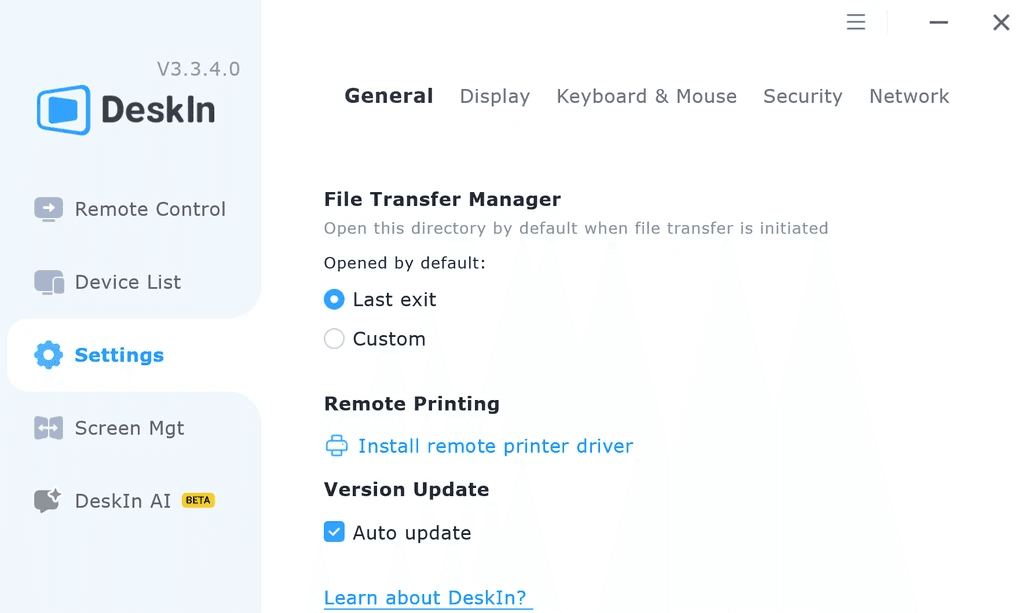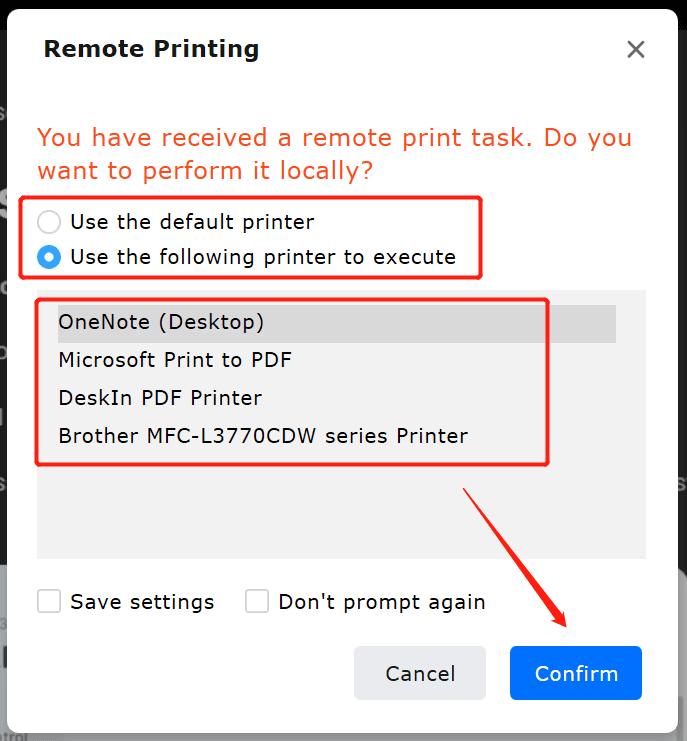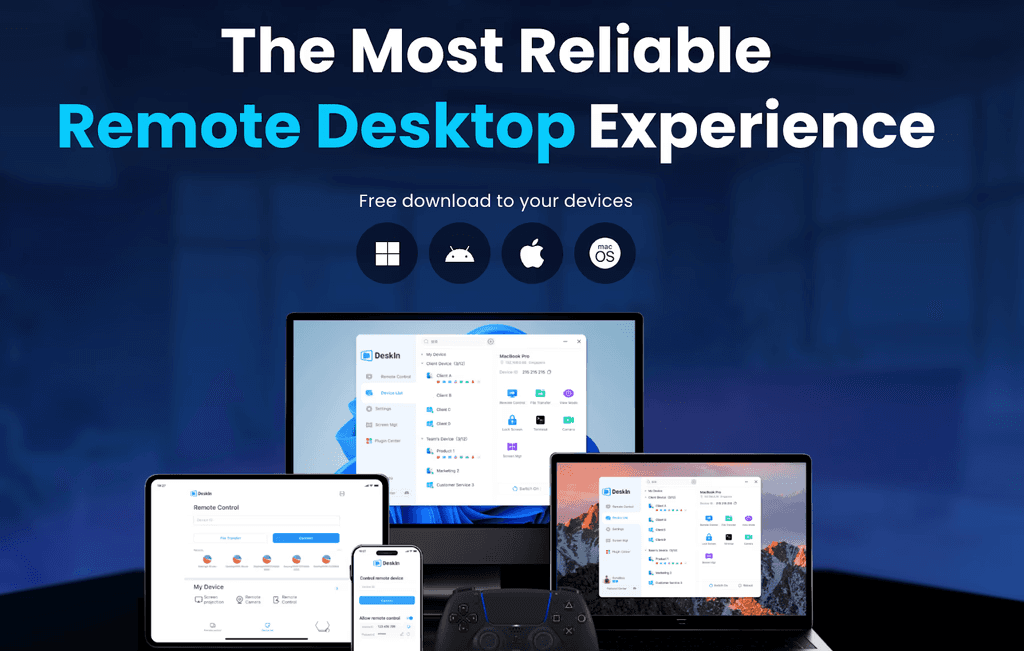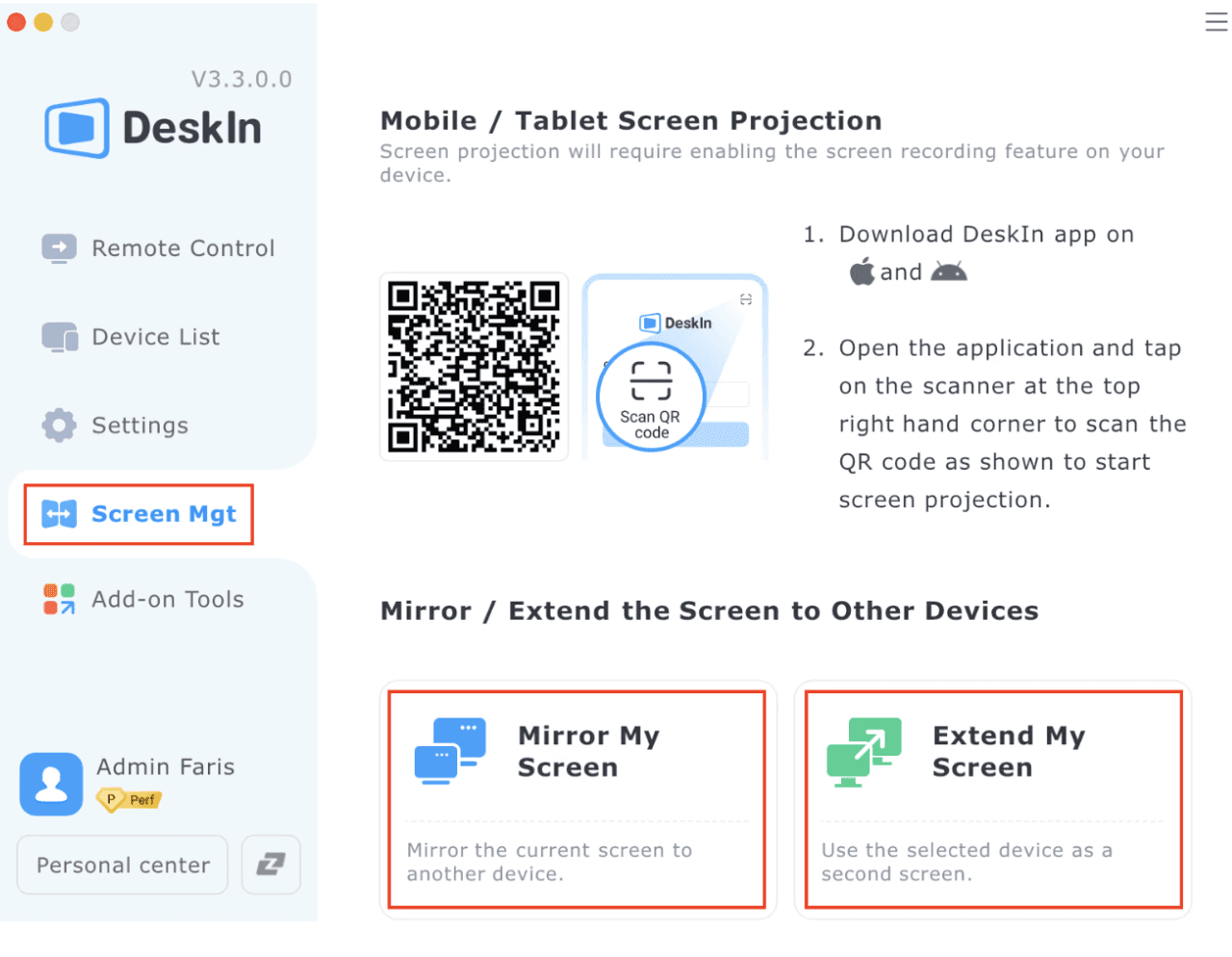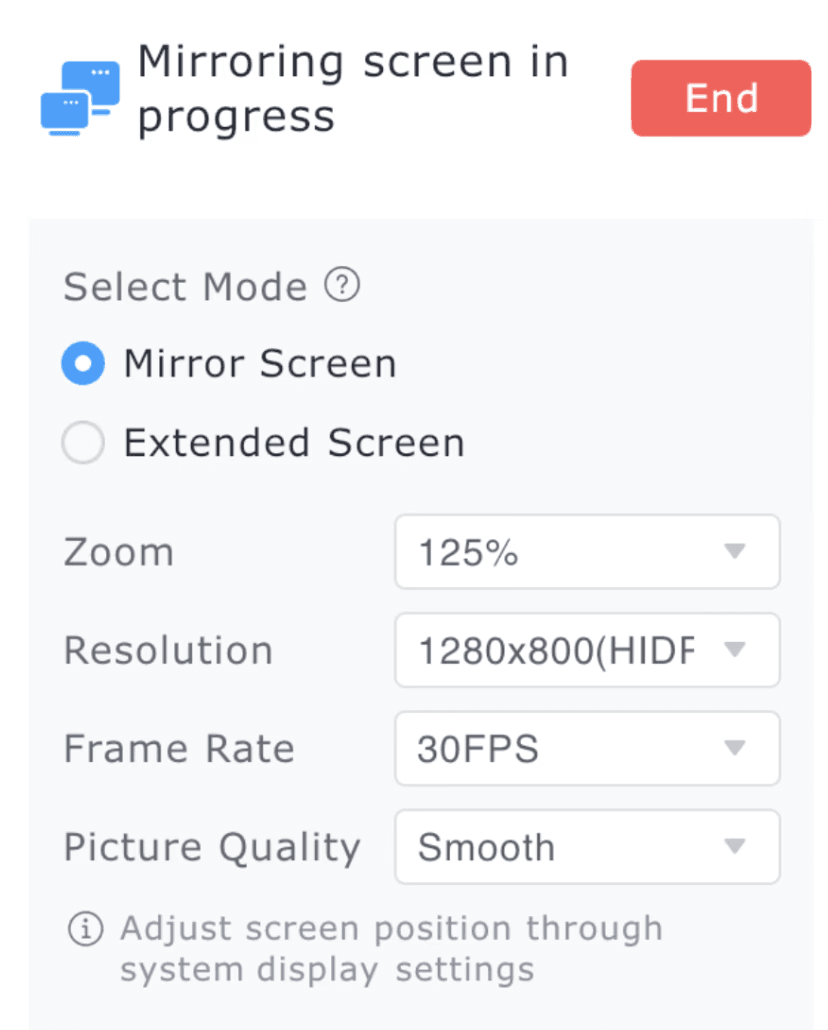Kết Nối Desktop Từ Xa Windows: Đây Là Cách Thiết Lập & Sử Dụng Nó?
Với việc Microsoft chính thức ngừng cung cấp phiên bản UWP của Kết Nối Desktop Từ Xa, nhiều người dùng hiện đang tìm kiếm những cách đáng tin cậy để kết nối từ xa đến các thiết bị Windows của họ. May mắn thay, Windows vẫn cung cấp một giải pháp tích hợp sẵn, Kết Nối Desktop Từ Xa, cho phép người dùng truy cập và điều khiển máy tính của họ từ hầu như bất cứ đâu. Dù bạn đang sử dụng Windows 10 hay Windows 11, thiết lập kết nối desktop từ xa trên Windows vẫn là một cách đơn giản và hiệu quả để duy trì năng suất trên nhiều thiết bị.
Trong bài viết này, chúng tôi sẽ hướng dẫn bạn mọi thứ bạn cần biết về việc kích hoạt và sử dụng Kết Nối Desktop Từ Xa trên Windows, giải quyết các vấn đề thường gặp mà bạn có thể gặp phải, và giới thiệu một giải pháp thay thế mạnh mẽ cho những ai tìm kiếm tính linh hoạt và hiệu suất hơn nữa.
👀 Thông Tin Liên Quan:
Microsoft Kết Nối Desktop Từ Xa Ngừng Hoạt Động: Tất Cả Những Gì Bạn Cần Biết
Kết Nối Desktop Từ Xa Là Gì?
Kết Nối Desktop Từ Xa là một tính năng tích hợp sẵn trong Windows cho phép người dùng kết nối và điều khiển một máy tính Windows từ một thiết bị khác, không kể vị trí. Dù Microsoft đã phát hành ứng dụng Windows như một giải pháp cập nhật, công cụ này vẫn hữu ích nếu bạn muốn truy cập vào máy tính làm việc trong khi di chuyển, cung cấp hỗ trợ từ xa, hoặc thậm chí hợp tác với các thành viên trong đội ngũ ở những vị trí khác nhau.
Kết Nối Desktop Từ Xa sử dụng Giao Thức Kết Nối Desktop Từ Xa (RDP) để thiết lập một kết nối an toàn giữa các thiết bị. Dù bạn đang sử dụng Windows 10 hay Windows 11, việc thiết lập kết nối desktop từ xa trên Windows có thể cải thiện đáng kể quy trình làm việc của bạn, mang lại sự linh hoạt và thuận tiện cho nhiều tình huống khác nhau.
Các Trường Hợp Sử Dụng Phổ Biến cho Kết Nối Desktop Từ Xa
Làm Việc Từ Xa và Hợp Tác Nhóm: Với nhiều doanh nghiệp chuyển sang mô hình làm việc từ xa hoặc hỗn hợp, Kết Nối Desktop Từ Xa cho phép nhân viên truy cập máy tính văn phòng từ nhà hoặc trong khi di chuyển, đảm bảo họ có thể tiếp tục làm việc một cách liền mạch trên các tệp và ứng dụng quan trọng.
Hỗ Trợ Từ Xa và Khắc Phục Sự Cố: Các chuyên gia CNTT và nhóm hỗ trợ kỹ thuật thường xuyên sử dụng Kết Nối Desktop Từ Xa để hỗ trợ người dùng trong việc khắc phục sự cố hoặc để cấu hình từ xa các cài đặt trên một thiết bị. Điều này loại bỏ nhu cầu thăm dò trực tiếp, tiết kiệm thời gian và nguồn lực.
Truy Cập Tệp và Ứng Dụng Cá Nhân: Người dùng cũng có thể sử dụng Kết Nối Desktop Từ Xa để truy cập máy tính cá nhân từ máy tính xách tay hoặc thiết bị di động của họ, giúp dễ dàng lấy tệp hoặc chạy ứng dụng như thể họ đang ngồi ngay trước máy tính để bàn của họ.
Chơi Game Từ Xa và Giải Trí: Những người chơi game có thể tận dụng Kết Nối Desktop Từ Xa để phát trực tuyến trò chơi từ máy tính chơi game của họ đến một thiết bị khác, chẳng hạn như máy tính xách tay hoặc máy tính bảng, cho một trải nghiệm chơi game liền mạnh, ngay cả khi đang ở xa nhà.
Nói tóm lại, Kết Nối Desktop Từ Xa trên Windows phục vụ cho nhiều mục đích thực tế, từ công việc chuyên nghiệp đến các hoạt động giải trí cá nhân, mang đến cho người dùng một công cụ mạnh mẽ để giữ kết nối với PC Windows của họ từ hầu như bất cứ đâu.
Cách Sử Dụng Kết Nối Desktop Từ Xa trên Windows 10/11
Giờ đây, khi chúng ta đã hiểu Kết Nối Desktop Từ Xa là gì, hãy học cách kết nối nó từ máy tính địa phương của bạn. Đây là một hướng dẫn đơn giản về cách bắt đầu với Kết Nối Desktop Từ Xa.
Bước 1. Nhấn "Win + I" để mở ứng dụng Cài Đặt. Đi tới "Hệ Thống > Kết Nối Desktop Từ Xa", và sau đó nhấp vào "Kích Hoạt Kết Nối Desktop Từ Xa" và xác nhận khi được nhắc.

📌 Lưu Ý: Tính năng Kết Nối Desktop Từ Xa có yêu cầu hệ thống. Nếu bạn là người dùng Windows Home, bạn có thể không thể kích hoạt nó. Nếu bạn gặp phải những vấn đề tương tự, hãy đọc bài viết bên dưới để biết thêm thông tin.
👉Cách Kích Hoạt Kết Nối Desktop Windows 10: Hướng Dẫn Dễ Dàng & Các Giải Quyết Lỗi
Bước 2. Trên máy tính địa phương của bạn (dù là PC Windows, Mac hay thiết bị khác), bạn cần mở ứng dụng Kết Nối Desktop Từ Xa. Trên Windows, bạn có thể làm điều này bằng cách nhấn "Win + R" để mở hộp thoại Chạy, sau đó gõ "mstsc" và nhấn Enter. Ngoài ra, bạn có thể tìm kiếm Kết Nối Desktop Từ Xa trong menu Bắt đầu.
Bước 3. Trong cửa sổ Kết Nối Desktop Từ Xa mở ra, bạn sẽ được yêu cầu nhập địa chỉ IP hoặc tên máy tính của PC từ xa mà bạn muốn kết nối. Bạn có thể tìm thấy thông tin này trên PC từ xa bằng cách làm theo các bước đã đề cập trong phần trước (Cài đặt > Hệ thống > Giới thiệu > Tên Thiết Bị). Sau khi nhập các chi tiết chính xác, nhấp vào "Kết Nối".
Bước 4. Khi bạn nhấp vào "Kết Nối", một lời nhắc đăng nhập sẽ xuất hiện. Nhập tên người dùng và mật khẩu của một tài khoản có quyền truy cập từ xa trên PC mục tiêu. Điều này có thể là tài khoản quản trị của bạn hoặc bất kỳ tài khoản người dùng nào mà bạn đã cấp quyền truy cập.

Sau khi đăng nhập, bạn sẽ thấy màn hình desktop Windows từ xa xuất hiện trên màn hình địa phương của bạn, cho phép bạn điều khiển PC như thể bạn đang ngồi trước nó.
Một Giải Pháp Tốt Hơn: Kết Nối Dễ Dàng Đến Máy Tính Windows Của Bạn với DeskIn
Nếu bạn đang tìm kiếm trải nghiệm kết nối desktop từ xa ổn định và hiệu quả hơn, hãy xem xét việc sử dụng một công cụ tiên tiến hơn: DeskIn. Nó nổi bật với nhiều ưu điểm chính so với Kết Nối Desktop Từ Xa truyền thống, giúp cho toàn bộ quá trình kết nối nhanh chóng và dễ dàng.

Tại Sao DeskIn Lại Là Lựa Chọn Thông Minh Hơn?
Độ Ổn Định Cao và Độ Trễ Siêu Thấp: Với hơn 200 nút tăng tốc toàn cầu, DeskIn đảm bảo các kết nối từ xa ổn định, tốc độ cao — ngay cả khi qua các lục địa. Khác với Kết Nối Desktop Từ Xa, thường có độ trễ trên các mạng yếu, DeskIn giữ cho hoạt động của bạn mượt mà và phản hồi trong mọi môi trường.
Không Cần Địa Chỉ IP Công Cộng hoặc Cài Đặt Phức Tạp: Quên việc chuyển tiếp cổng, VPN hoặc địa chỉ IP công cộng. DeskIn đơn giản hóa mọi thứ: chỉ cần cài đặt ứng dụng, đăng nhập và bắt đầu điều khiển PC của bạn — không có rào cản kỹ thuật.
Truy Cập Bất Cứ Khi Nào Từ PC, Di Động, Hoặc Máy Tính Bảng: DeskIn hỗ trợ Windows, macOS, iOS và Android, mang đến cho bạn quyền kiểm soát hoàn toàn trên các thiết bị. So với Kết Nối Desktop Từ Xa, việc truy cập di động của DeskIn nhanh hơn, dễ dàng hơn, và không cần cấu hình bổ sung.
Miễn Phí Cho Việc Sử Dụng Thương Mại: Kế hoạch miễn phí của DeskIn cho phép điều khiển từ xa lên đến ba thiết bị, ngay cả cho nhu cầu kinh doanh — là một lợi thế lớn so với Kết Nối Desktop, có thể yêu cầu cấp phép bổ sung tùy thuộc vào phiên bản Windows của bạn.
Hoàn Hảo Cho Bất Kỳ Tình Huống Nào: Cho dù làm việc từ xa, chơi game, hỗ trợ khách hàng, hay truy xuất tệp khi di chuyển, DeskIn thích ứng một cách dễ dàng. Nó cung cấp các tính năng thông minh như điều chỉnh độ phân giải tự động, kết nối lại phiên, và mã hóa mạnh mẽ cho quyền truy cập an toàn.
Để dễ dàng truy cập từ xa vào các PC Windows, bạn có thể xem bảng so sánh dưới đây (dựa trên bộ tính năng mới nhất của DeskIn) để có quyết định dễ dàng hơn.
Tính Năng | Kết Nối DeskIn | Kết Nối Desktop Từ Xa |
|---|---|---|
Độ Ổn Định Kết Nối | Rất ổn định, với độ khả dụng cao | Có thể gặp phải gián đoạn trên các mạng yếu |
Khả Năng Tương Thích | Hỗ trợ Windows, macOS, iOS và Android | Chỉ khả dụng cho PC Windows |
Hỗ Trợ Di Động | Hỗ trợ hoàn toàn di động/máy tính bảng | Tùy chọn di động/máy tính bảng hạn chế |
Cài Đặt | Dễ dàng, không yêu cầu địa chỉ IP công cộng | Cần cấu hình mạng và địa chỉ IP công cộng |
Dễ Sử Dụng | Cài đặt & kết nối dễ dàng | Cần kích hoạt cài đặt hệ thống và quy tắc tường lửa |
Phiên Bản Miễn Phí Cho Doanh Nghiệp | Có, lên đến 3 thiết bị | Hạn chế, yêu cầu phiên bản Windows đúng |
Kết Nối Đến Máy Tính Windows Của Bạn Bất Cứ Nơi Đâu Với DeskIn
Bắt đầu với DeskIn rất đơn giản, ngay cả khi bạn là người mới với các công cụ kết nối desktop từ xa. Hãy làm theo các bước đơn giản sau để truy cập từ xa vào máy tính Windows của bạn bất kỳ lúc nào, ở bất kỳ đâu.
Bước 1. Đầu tiên, hãy truy cập trang web chính thức của DeskIn và tải xuống phiên bản phù hợp cho thiết bị của bạn — dù là Windows, macOS, iOS hay Android. Sau khi tải xuống, cài đặt ứng dụng theo hướng dẫn trên màn hình.
Bước 2. Sau khi cài đặt, mở ứng dụng DeskIn. Nếu bạn đã có tài khoản, chỉ cần đăng nhập bằng thông tin đăng nhập của bạn. Nếu bạn là người dùng mới, bạn có thể nhanh chóng tạo một tài khoản trong vòng vài phút — hoàn toàn miễn phí.

Bước 3. Sau khi đăng nhập, chỉ cần sử dụng ID thiết bị và mật khẩu trên PC mục tiêu của bạn để kết nối. Sau đó, chọn PC Windows mà bạn muốn điều khiển và khởi tạo kết nối. Bây giờ, bạn sẽ có quyền truy cập từ xa đầy đủ, cho phép bạn làm việc, quản lý tệp, hoặc khắc phục sự cố từ hầu như bất cứ đâu.

Những Lời Cuối
Cuối cùng, dù bạn chọn Kết Nối Desktop Từ Xa trên Windows hay chuyển sang một công cụ tiên tiến hơn như DeskIn, cả hai tùy chọn đều có thể nâng cao trải nghiệm kết nối desktop từ xa của bạn, làm cho nó hiệu quả và dễ dàng tiếp cận hơn.
Mặc dù Kết Nối Desktop Từ Xa là một giải pháp đáng tin cậy cho việc truy cập từ xa cơ bản, DeskIn cung cấp độ ổn định cao hơn, khả năng tương thích tốt hơn trên các thiết bị và một kết nối mượt mà hơn cho nhiều trường hợp sử dụng khác nhau. Bằng cách chọn công cụ phù hợp dựa trên nhu cầu của bạn, bạn có thể tận hưởng một trải nghiệm làm việc từ xa mượt mà và năng suất hơn.
Kết Nối Desktop Từ Xa Windows: Đây Là Cách Thiết Lập & Sử Dụng Nó?
Với việc Microsoft chính thức ngừng cung cấp phiên bản UWP của Kết Nối Desktop Từ Xa, nhiều người dùng hiện đang tìm kiếm những cách đáng tin cậy để kết nối từ xa đến các thiết bị Windows của họ. May mắn thay, Windows vẫn cung cấp một giải pháp tích hợp sẵn, Kết Nối Desktop Từ Xa, cho phép người dùng truy cập và điều khiển máy tính của họ từ hầu như bất cứ đâu. Dù bạn đang sử dụng Windows 10 hay Windows 11, thiết lập kết nối desktop từ xa trên Windows vẫn là một cách đơn giản và hiệu quả để duy trì năng suất trên nhiều thiết bị.
Trong bài viết này, chúng tôi sẽ hướng dẫn bạn mọi thứ bạn cần biết về việc kích hoạt và sử dụng Kết Nối Desktop Từ Xa trên Windows, giải quyết các vấn đề thường gặp mà bạn có thể gặp phải, và giới thiệu một giải pháp thay thế mạnh mẽ cho những ai tìm kiếm tính linh hoạt và hiệu suất hơn nữa.
👀 Thông Tin Liên Quan:
Microsoft Kết Nối Desktop Từ Xa Ngừng Hoạt Động: Tất Cả Những Gì Bạn Cần Biết
Kết Nối Desktop Từ Xa Là Gì?
Kết Nối Desktop Từ Xa là một tính năng tích hợp sẵn trong Windows cho phép người dùng kết nối và điều khiển một máy tính Windows từ một thiết bị khác, không kể vị trí. Dù Microsoft đã phát hành ứng dụng Windows như một giải pháp cập nhật, công cụ này vẫn hữu ích nếu bạn muốn truy cập vào máy tính làm việc trong khi di chuyển, cung cấp hỗ trợ từ xa, hoặc thậm chí hợp tác với các thành viên trong đội ngũ ở những vị trí khác nhau.
Kết Nối Desktop Từ Xa sử dụng Giao Thức Kết Nối Desktop Từ Xa (RDP) để thiết lập một kết nối an toàn giữa các thiết bị. Dù bạn đang sử dụng Windows 10 hay Windows 11, việc thiết lập kết nối desktop từ xa trên Windows có thể cải thiện đáng kể quy trình làm việc của bạn, mang lại sự linh hoạt và thuận tiện cho nhiều tình huống khác nhau.
Các Trường Hợp Sử Dụng Phổ Biến cho Kết Nối Desktop Từ Xa
Làm Việc Từ Xa và Hợp Tác Nhóm: Với nhiều doanh nghiệp chuyển sang mô hình làm việc từ xa hoặc hỗn hợp, Kết Nối Desktop Từ Xa cho phép nhân viên truy cập máy tính văn phòng từ nhà hoặc trong khi di chuyển, đảm bảo họ có thể tiếp tục làm việc một cách liền mạch trên các tệp và ứng dụng quan trọng.
Hỗ Trợ Từ Xa và Khắc Phục Sự Cố: Các chuyên gia CNTT và nhóm hỗ trợ kỹ thuật thường xuyên sử dụng Kết Nối Desktop Từ Xa để hỗ trợ người dùng trong việc khắc phục sự cố hoặc để cấu hình từ xa các cài đặt trên một thiết bị. Điều này loại bỏ nhu cầu thăm dò trực tiếp, tiết kiệm thời gian và nguồn lực.
Truy Cập Tệp và Ứng Dụng Cá Nhân: Người dùng cũng có thể sử dụng Kết Nối Desktop Từ Xa để truy cập máy tính cá nhân từ máy tính xách tay hoặc thiết bị di động của họ, giúp dễ dàng lấy tệp hoặc chạy ứng dụng như thể họ đang ngồi ngay trước máy tính để bàn của họ.
Chơi Game Từ Xa và Giải Trí: Những người chơi game có thể tận dụng Kết Nối Desktop Từ Xa để phát trực tuyến trò chơi từ máy tính chơi game của họ đến một thiết bị khác, chẳng hạn như máy tính xách tay hoặc máy tính bảng, cho một trải nghiệm chơi game liền mạnh, ngay cả khi đang ở xa nhà.
Nói tóm lại, Kết Nối Desktop Từ Xa trên Windows phục vụ cho nhiều mục đích thực tế, từ công việc chuyên nghiệp đến các hoạt động giải trí cá nhân, mang đến cho người dùng một công cụ mạnh mẽ để giữ kết nối với PC Windows của họ từ hầu như bất cứ đâu.
Cách Sử Dụng Kết Nối Desktop Từ Xa trên Windows 10/11
Giờ đây, khi chúng ta đã hiểu Kết Nối Desktop Từ Xa là gì, hãy học cách kết nối nó từ máy tính địa phương của bạn. Đây là một hướng dẫn đơn giản về cách bắt đầu với Kết Nối Desktop Từ Xa.
Bước 1. Nhấn "Win + I" để mở ứng dụng Cài Đặt. Đi tới "Hệ Thống > Kết Nối Desktop Từ Xa", và sau đó nhấp vào "Kích Hoạt Kết Nối Desktop Từ Xa" và xác nhận khi được nhắc.

📌 Lưu Ý: Tính năng Kết Nối Desktop Từ Xa có yêu cầu hệ thống. Nếu bạn là người dùng Windows Home, bạn có thể không thể kích hoạt nó. Nếu bạn gặp phải những vấn đề tương tự, hãy đọc bài viết bên dưới để biết thêm thông tin.
👉Cách Kích Hoạt Kết Nối Desktop Windows 10: Hướng Dẫn Dễ Dàng & Các Giải Quyết Lỗi
Bước 2. Trên máy tính địa phương của bạn (dù là PC Windows, Mac hay thiết bị khác), bạn cần mở ứng dụng Kết Nối Desktop Từ Xa. Trên Windows, bạn có thể làm điều này bằng cách nhấn "Win + R" để mở hộp thoại Chạy, sau đó gõ "mstsc" và nhấn Enter. Ngoài ra, bạn có thể tìm kiếm Kết Nối Desktop Từ Xa trong menu Bắt đầu.
Bước 3. Trong cửa sổ Kết Nối Desktop Từ Xa mở ra, bạn sẽ được yêu cầu nhập địa chỉ IP hoặc tên máy tính của PC từ xa mà bạn muốn kết nối. Bạn có thể tìm thấy thông tin này trên PC từ xa bằng cách làm theo các bước đã đề cập trong phần trước (Cài đặt > Hệ thống > Giới thiệu > Tên Thiết Bị). Sau khi nhập các chi tiết chính xác, nhấp vào "Kết Nối".
Bước 4. Khi bạn nhấp vào "Kết Nối", một lời nhắc đăng nhập sẽ xuất hiện. Nhập tên người dùng và mật khẩu của một tài khoản có quyền truy cập từ xa trên PC mục tiêu. Điều này có thể là tài khoản quản trị của bạn hoặc bất kỳ tài khoản người dùng nào mà bạn đã cấp quyền truy cập.

Sau khi đăng nhập, bạn sẽ thấy màn hình desktop Windows từ xa xuất hiện trên màn hình địa phương của bạn, cho phép bạn điều khiển PC như thể bạn đang ngồi trước nó.
Một Giải Pháp Tốt Hơn: Kết Nối Dễ Dàng Đến Máy Tính Windows Của Bạn với DeskIn
Nếu bạn đang tìm kiếm trải nghiệm kết nối desktop từ xa ổn định và hiệu quả hơn, hãy xem xét việc sử dụng một công cụ tiên tiến hơn: DeskIn. Nó nổi bật với nhiều ưu điểm chính so với Kết Nối Desktop Từ Xa truyền thống, giúp cho toàn bộ quá trình kết nối nhanh chóng và dễ dàng.

Tại Sao DeskIn Lại Là Lựa Chọn Thông Minh Hơn?
Độ Ổn Định Cao và Độ Trễ Siêu Thấp: Với hơn 200 nút tăng tốc toàn cầu, DeskIn đảm bảo các kết nối từ xa ổn định, tốc độ cao — ngay cả khi qua các lục địa. Khác với Kết Nối Desktop Từ Xa, thường có độ trễ trên các mạng yếu, DeskIn giữ cho hoạt động của bạn mượt mà và phản hồi trong mọi môi trường.
Không Cần Địa Chỉ IP Công Cộng hoặc Cài Đặt Phức Tạp: Quên việc chuyển tiếp cổng, VPN hoặc địa chỉ IP công cộng. DeskIn đơn giản hóa mọi thứ: chỉ cần cài đặt ứng dụng, đăng nhập và bắt đầu điều khiển PC của bạn — không có rào cản kỹ thuật.
Truy Cập Bất Cứ Khi Nào Từ PC, Di Động, Hoặc Máy Tính Bảng: DeskIn hỗ trợ Windows, macOS, iOS và Android, mang đến cho bạn quyền kiểm soát hoàn toàn trên các thiết bị. So với Kết Nối Desktop Từ Xa, việc truy cập di động của DeskIn nhanh hơn, dễ dàng hơn, và không cần cấu hình bổ sung.
Miễn Phí Cho Việc Sử Dụng Thương Mại: Kế hoạch miễn phí của DeskIn cho phép điều khiển từ xa lên đến ba thiết bị, ngay cả cho nhu cầu kinh doanh — là một lợi thế lớn so với Kết Nối Desktop, có thể yêu cầu cấp phép bổ sung tùy thuộc vào phiên bản Windows của bạn.
Hoàn Hảo Cho Bất Kỳ Tình Huống Nào: Cho dù làm việc từ xa, chơi game, hỗ trợ khách hàng, hay truy xuất tệp khi di chuyển, DeskIn thích ứng một cách dễ dàng. Nó cung cấp các tính năng thông minh như điều chỉnh độ phân giải tự động, kết nối lại phiên, và mã hóa mạnh mẽ cho quyền truy cập an toàn.
Để dễ dàng truy cập từ xa vào các PC Windows, bạn có thể xem bảng so sánh dưới đây (dựa trên bộ tính năng mới nhất của DeskIn) để có quyết định dễ dàng hơn.
Tính Năng | Kết Nối DeskIn | Kết Nối Desktop Từ Xa |
|---|---|---|
Độ Ổn Định Kết Nối | Rất ổn định, với độ khả dụng cao | Có thể gặp phải gián đoạn trên các mạng yếu |
Khả Năng Tương Thích | Hỗ trợ Windows, macOS, iOS và Android | Chỉ khả dụng cho PC Windows |
Hỗ Trợ Di Động | Hỗ trợ hoàn toàn di động/máy tính bảng | Tùy chọn di động/máy tính bảng hạn chế |
Cài Đặt | Dễ dàng, không yêu cầu địa chỉ IP công cộng | Cần cấu hình mạng và địa chỉ IP công cộng |
Dễ Sử Dụng | Cài đặt & kết nối dễ dàng | Cần kích hoạt cài đặt hệ thống và quy tắc tường lửa |
Phiên Bản Miễn Phí Cho Doanh Nghiệp | Có, lên đến 3 thiết bị | Hạn chế, yêu cầu phiên bản Windows đúng |
Kết Nối Đến Máy Tính Windows Của Bạn Bất Cứ Nơi Đâu Với DeskIn
Bắt đầu với DeskIn rất đơn giản, ngay cả khi bạn là người mới với các công cụ kết nối desktop từ xa. Hãy làm theo các bước đơn giản sau để truy cập từ xa vào máy tính Windows của bạn bất kỳ lúc nào, ở bất kỳ đâu.
Bước 1. Đầu tiên, hãy truy cập trang web chính thức của DeskIn và tải xuống phiên bản phù hợp cho thiết bị của bạn — dù là Windows, macOS, iOS hay Android. Sau khi tải xuống, cài đặt ứng dụng theo hướng dẫn trên màn hình.
Bước 2. Sau khi cài đặt, mở ứng dụng DeskIn. Nếu bạn đã có tài khoản, chỉ cần đăng nhập bằng thông tin đăng nhập của bạn. Nếu bạn là người dùng mới, bạn có thể nhanh chóng tạo một tài khoản trong vòng vài phút — hoàn toàn miễn phí.

Bước 3. Sau khi đăng nhập, chỉ cần sử dụng ID thiết bị và mật khẩu trên PC mục tiêu của bạn để kết nối. Sau đó, chọn PC Windows mà bạn muốn điều khiển và khởi tạo kết nối. Bây giờ, bạn sẽ có quyền truy cập từ xa đầy đủ, cho phép bạn làm việc, quản lý tệp, hoặc khắc phục sự cố từ hầu như bất cứ đâu.

Những Lời Cuối
Cuối cùng, dù bạn chọn Kết Nối Desktop Từ Xa trên Windows hay chuyển sang một công cụ tiên tiến hơn như DeskIn, cả hai tùy chọn đều có thể nâng cao trải nghiệm kết nối desktop từ xa của bạn, làm cho nó hiệu quả và dễ dàng tiếp cận hơn.
Mặc dù Kết Nối Desktop Từ Xa là một giải pháp đáng tin cậy cho việc truy cập từ xa cơ bản, DeskIn cung cấp độ ổn định cao hơn, khả năng tương thích tốt hơn trên các thiết bị và một kết nối mượt mà hơn cho nhiều trường hợp sử dụng khác nhau. Bằng cách chọn công cụ phù hợp dựa trên nhu cầu của bạn, bạn có thể tận hưởng một trải nghiệm làm việc từ xa mượt mà và năng suất hơn.

Play x Work
All at Once
DeskIn Remote Game
only $14.32 USD 🎉 Limited on July 16-31
Add promo code: deskinsummer1






